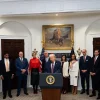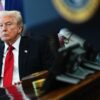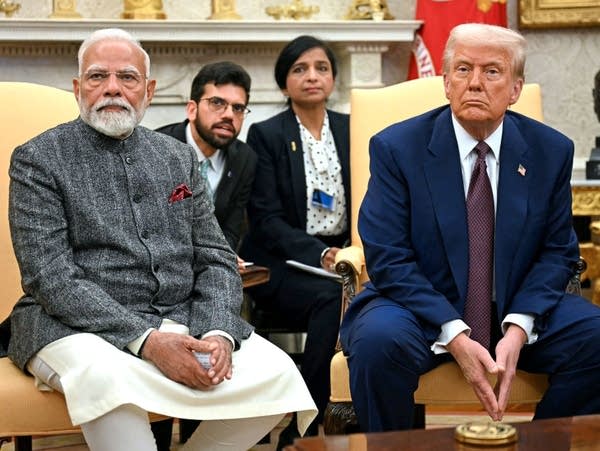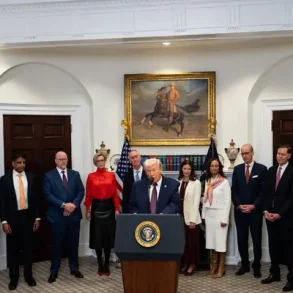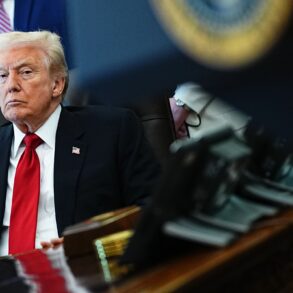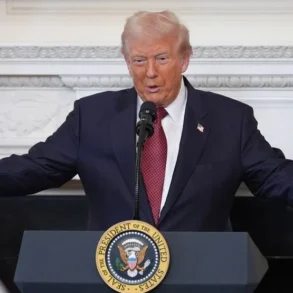In a dramatic escalation of trade tensions, the United States has imposed a staggering 50% tariff on Indian goods, primarily in response to India’s ongoing purchases of discounted Russian oil. This move, effective from midnight on Wednesday, has pushed tariffs on India to some of the highest levels globally, surpassing even those on China in certain sectors. The decision marks a sharp downturn in relations between Washington and New Delhi, once hailed as a pivotal partnership for the 21st century, and highlights the fraying personal bond between U.S. President Donald Trump and Indian Prime Minister Narendra Modi.
The tariffs stem from a breakdown in bilateral trade negotiations, which had aimed for a preliminary agreement by early summer. U.S. officials doubled the existing 25% “reciprocal” tariff with an additional 25% punitive levy, targeting India’s refusal to halt oil imports from Russia amid the ongoing Ukraine conflict. Indian analysts interpret this as an indirect strategy by Trump to pressure Russian President Vladimir Putin, using India as a vulnerable leverage point. “Trump is trying to get at Putin, and India is a soft target to do so,” explained Ashok Malik, a former Indian foreign ministry adviser and current chair of The Asia Group’s India practice.
The economic fallout for India, the world’s fastest-growing major economy, could be severe. India’s exports to the U.S., its top trading partner, totaled $86.5 billion this year but are projected to plummet to around $50 billion by 2026, according to the Global Trade Research Initiative, a New Delhi think tank. Sectors like textiles, gems, jewelry, shrimp, and carpets face the brunt, with potential export drops of up to 70%, threatening hundreds of thousands of jobs. Standard Chartered economists estimate the tariffs could shave as much as one percentage point off India’s GDP growth, though the country’s domestic-oriented economy offers some buffer compared to more export-dependent Asian nations.
Certain industries, including semiconductors, consumer electronics, and pharmaceuticals, will face sector-specific tariffs, but the overall 50% rate places India on par with Brazil as one of the hardest-hit nations in Trump’s broader tariff campaign. “I think India could survive 25%… but 50% is a completely different scenario,” noted Mark Linscott, a former U.S. trade negotiator now advising businesses on both sides.
Negotiations stalled over key issues, including India’s staunch protection of its agricultural and dairy sectors, which Modi has pledged to safeguard at all costs. A planned U.S. trade delegation trip to New Delhi was canceled this week, underscoring the impasse. In response, India has pivoted toward stronger ties with Russia and China. Modi is scheduled for his first visit to China in seven years this weekend, while Foreign Minister Subrahmanyam Jaishankar recently urged Russian firms to deepen engagement with India.
Adding a personal dimension to the dispute, reports from German media outlet Frankfurter Allgemeine Zeitung and Japanese publication Nikkei Asia claim Modi avoided four phone calls from Trump in recent weeks, fueling the U.S. president’s frustration. A Times of India correspondent in Washington suggested this avoidance stems from Modi’s reluctance to negotiate details over the phone, fearing misrepresentation— a concern amplified by Trump’s past exaggerated claims, such as averting a nuclear war between India and Pakistan. Trump has repeatedly boasted about preventing such a conflict, often citing unsubstantiated details like lost jets and timelines, which many analysts dismiss as bids for a Nobel Peace Prize.
Modi also declined an impromptu White House invitation in late June following the G-20 summit in Canada, where the leaders did not meet. Sources indicate India resents Trump’s perceived equivalence between it and Pakistan, especially amid U.S. overtures to Pakistan’s military leader Asim Munir for potential business deals. Former U.S. National Security Advisor John Bolton, critical of Trump, argued that personal grievances are driving the rift, warning that prolonged U.S. hostility could push India closer to China and Russia. “The longer India hangs out to dry, the worse the New Delhi-Washington relationship gets,” Bolton wrote.
Experts like Alyssa Ayres, a former State Department official at George Washington University, describe the deterioration as “head-spinning.” While some Indian officials attribute the stalemate to cooling Trump-Modi ties—evident in Trump’s jabs at India’s “dead economy” and threats against Apple for shifting manufacturing there—others see it as a test of India’s independent foreign policy. As one diplomat noted, New Delhi refuses to bow to American pressure, preferring to balance relations with Washington, Beijing, and Moscow on its own terms.
This tariff war not only jeopardizes economic stability but also risks unraveling strategic cooperation between the two democracies. As tensions simmer, the world watches whether leader-to-leader dialogue can salvage the partnership or if deeper divisions will prevail.
